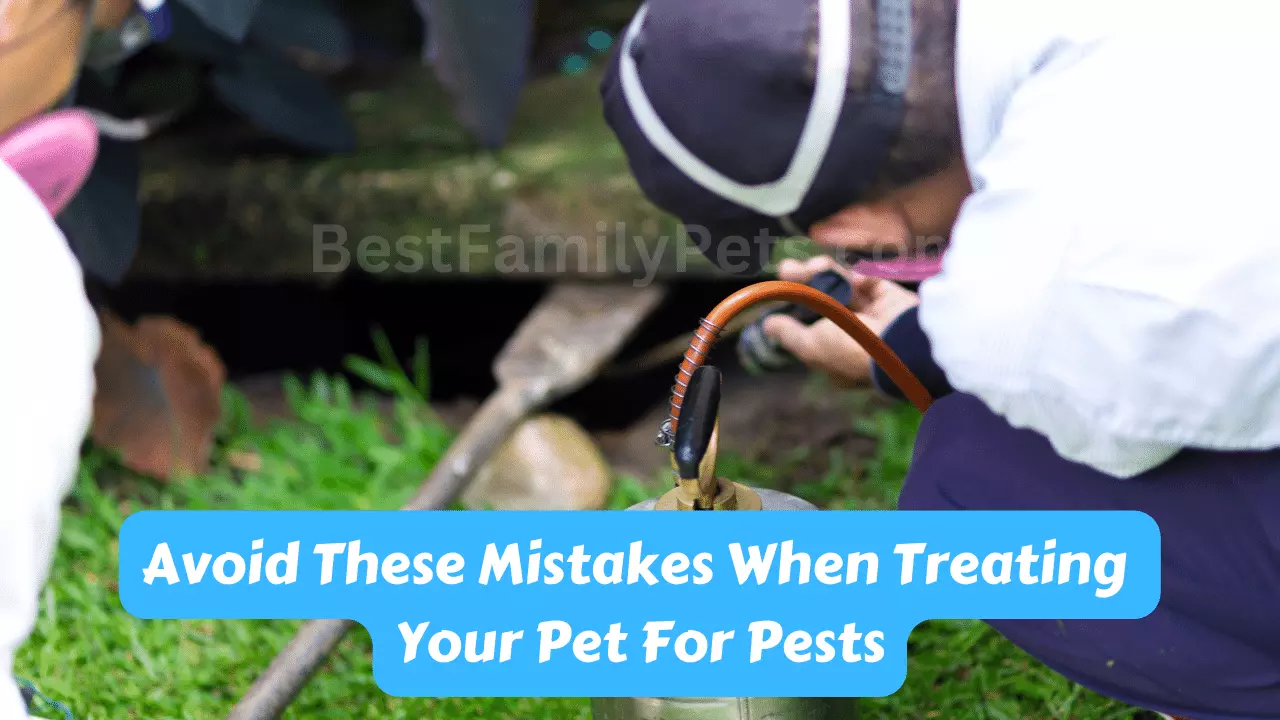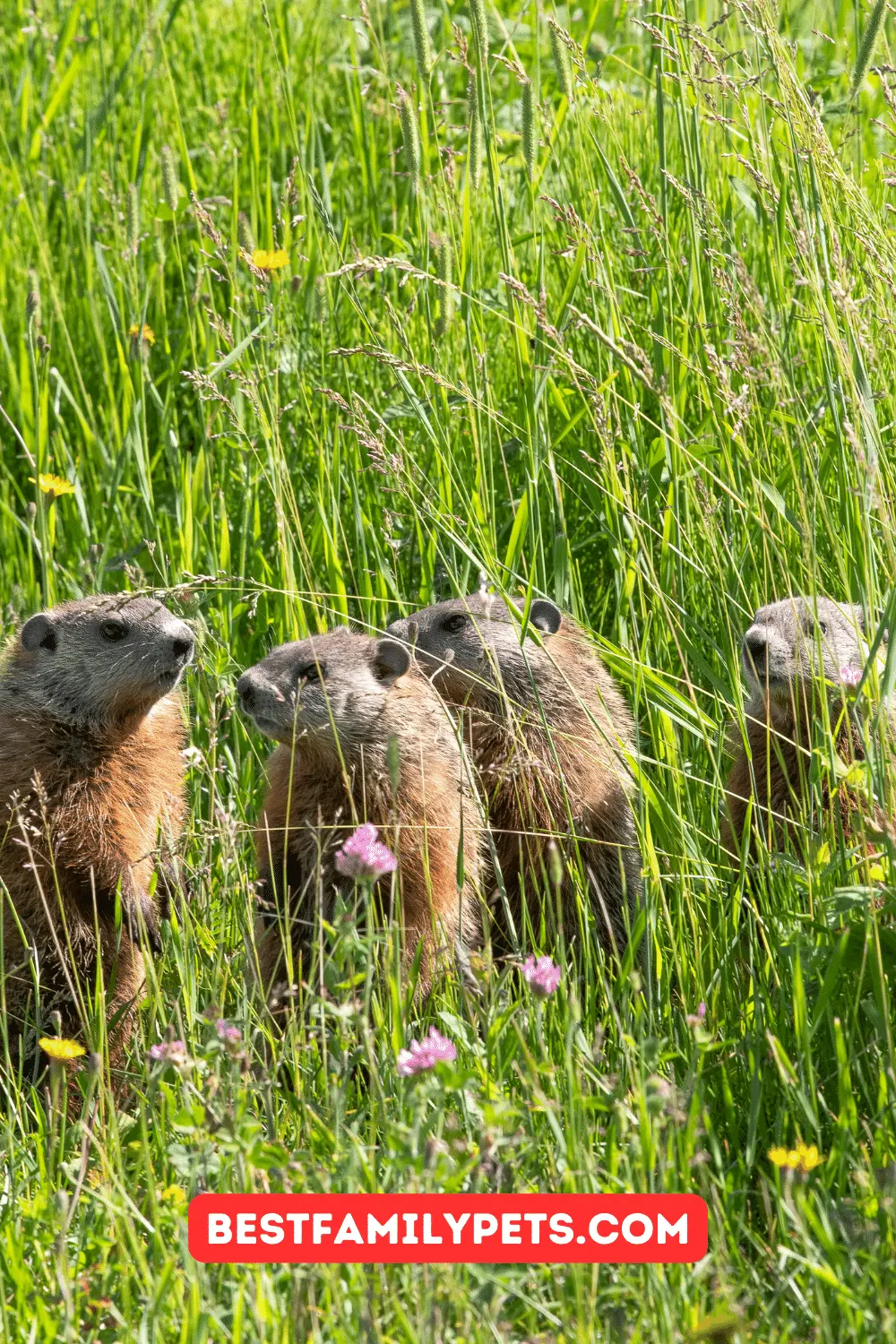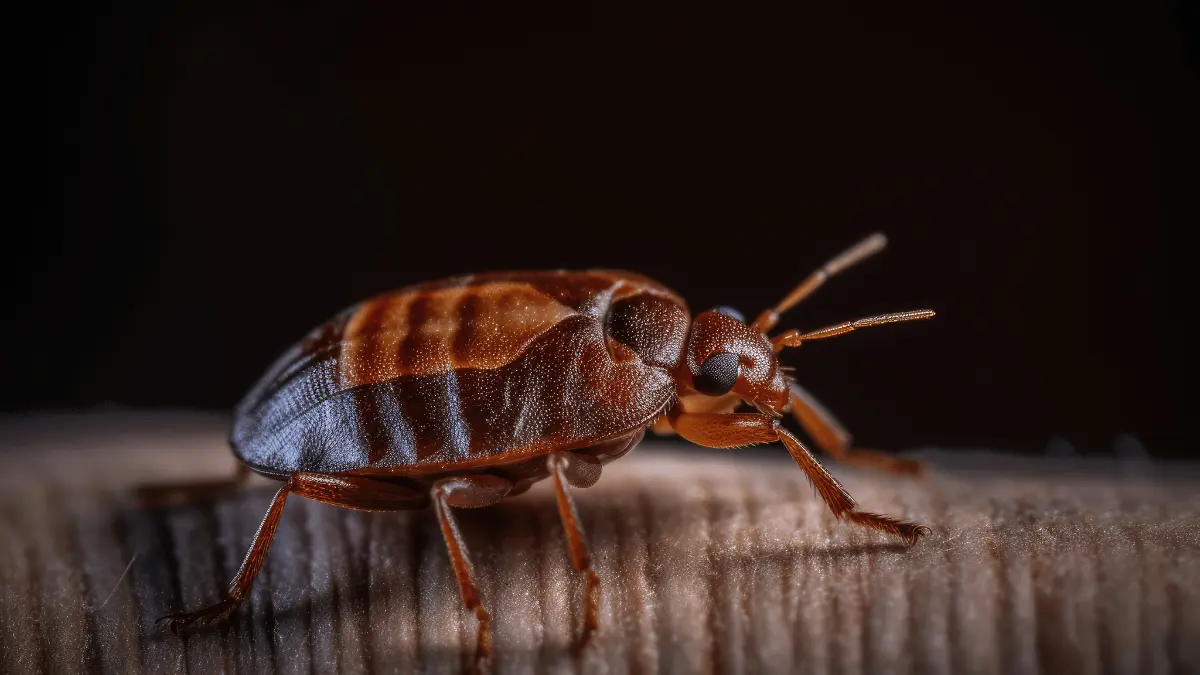How to Get Rid of Groundhogs?
Conquer your garden woes! Learn effective & humane methods to get rid of groundhogs & prevent future invasions.
Groundhogs, also known as woodchucks, might seem adorable with their pudgy bodies and curious noses. But for homeowners, these furry creatures can become unwelcome guests, wreaking havoc on gardens and landscaping. From digging tunnels that disrupt your carefully planned yard to feasting on your prized vegetables, groundhogs can quickly turn your outdoor haven into a battleground.
If you’re finding yourself locked in this war with a persistent groundhog, fret no more!
This guide will equip you with the knowledge and strategies you need to reclaim your yard, offering both humane and effective methods to send these burrowing bandits packing.
Table of Contents
What Are Groundhogs?
Groundhogs, also known as woodchucks, are fascinating creatures that share our backyards and natural landscapes. These burrowing rodents capture our attention with their plump bodies, distinctive calls, and curious personalities. But beyond their undeniable cuteness lies a complex life cycle and vital role within their ecosystem. Let’s delve deeper into the world of groundhogs, exploring their habitat, behavior, and significance in the natural world.
Physical Characteristics and Habitat:
Groundhogs are medium-sized rodents belonging to the Sciuridae family, which also includes squirrels and chipmunks. They boast a stocky build with short legs, a bushy tail, and thick fur that ranges in color from brown to grayish-black. These nocturnal and solitary animals primarily inhabit meadows, fields, forests, and even backyards, where they construct elaborate burrow systems with multiple chambers for sleeping, nesting, and hibernation.
Diet and Hibernation:
Groundhogs are herbivores, primarily feasting on a variety of grasses, dandelions, clover, and other vegetation. They also occasionally consume fruits and insects to supplement their diet. Interestingly, groundhogs undergo a hibernation period during the winter months. To prepare for this extended sleep, they diligently fatten themselves up throughout the fall, storing energy reserves in the form of body fat. During hibernation, their body temperature and heart rate drop significantly, allowing them to conserve energy until spring arrives.
Reproduction and Lifespan:
Groundhogs typically mate in the early spring, after emerging from hibernation. The female gives birth to a litter of four to six pups in their underground burrows. These pups are blind and hairless at birth, but they develop quickly, becoming independent around two months old. Groundhogs generally have a lifespan of two to six years in the wild, with some individuals living even longer.
Ecological Importance:
Groundhogs play a vital role in maintaining healthy ecosystems. Their burrowing activities help aerate the soil and promote drainage, improving soil quality. They also serve as a food source for various predators, including foxes, coyotes, and owls. Additionally, groundhogs help disperse seeds through their droppings, contributing to plant diversity and ecosystem resilience.
Groundhogs and Humans:
While groundhogs can be beneficial for the environment, they can sometimes become nuisances in human-populated areas. Their burrowing habits can damage gardens and landscaping, and their feeding behavior can lead to the destruction of crops. However, with proper prevention and management strategies, humans can coexist peacefully with these fascinating creatures.
Groundhogs are much more than just furry residents of our backyards. They are essential members of their ecosystems, playing a crucial role in maintaining soil health, seed dispersal, and the food chain. By understanding their behavior, habitat, and ecological significance, we can appreciate these remarkable creatures and learn to coexist with them in a harmonious way.
Signs of Groundhogs: Spotting the Subtle Clues of Backyard Burrowers
Groundhogs, also known as woodchucks, are fascinating creatures that share our backyards and natural landscapes. While these nocturnal animals may not be out and about all the time, their presence can often be detected by the signs they leave behind. Whether you’re curious about potential groundhog activity in your yard or simply want to learn more about their habits, understanding these telltale signs is crucial.
Unearthing the Evidence: Burrows and Tunnels
One of the most obvious signs of groundhogs is the presence of burrows and tunnels in your yard. These underground structures can be several feet long and often have multiple entrances and exits. Look for mounds of dirt surrounding the burrow openings, as groundhogs push excess soil out while digging. Additionally, freshly dug tunnels with loose soil around the edges might indicate recent activity.
Signs of Feasting: Damage to Plants and Gardens
Groundhogs are herbivores with a healthy appetite for various plants. If you notice damage to your flowers, vegetables, or other vegetation, it could be a sign of groundhog activity. Look for chewed leaves, missing plant parts, or flattened stems that may indicate these burrowing herbivores have been feasting in your garden.
Droppings and Scents: Unmistakable Traces
Groundhog droppings are another telltale sign of their presence. These pellet-shaped droppings are usually dark brown or black and resemble rabbit droppings, but they are slightly larger. Additionally, groundhogs may leave behind a musky scent near their burrows or areas they frequent. While not always noticeable, this distinctive odor can be a clue to their activity, especially during mating season.
Tracks and Sightings: Spotting the Groundhog Itself
While groundhogs are nocturnal, they may occasionally be spotted during the day, especially during the early morning or evening hours. Look for a stocky rodent with short legs, a bushy tail, and brown or grayish-black fur. If you’re lucky enough to see one, observe its behavior. Groundhogs often stand on their hind legs to survey their surroundings, a distinctive characteristic that can help you identify them.
Beyond the Obvious: Listen for Whistles and Scrapes
Groundhogs are surprisingly vocal creatures. They use a variety of whistles, chirps, and barks to communicate with each other. While not as common as visual signs, hearing these vocalizations near burrows or in your yard can be another indication of groundhog activity. Additionally, listen for scratching or scraping sounds coming from underground, which might be a sign of digging activity.
By observing the various signs mentioned above, you can effectively detect the presence of groundhogs in your yard. Combining several of these clues, such as burrows, plant damage, droppings, or sightings, can provide a clearer picture of groundhog activity. If you suspect groundhogs are causing problems in your yard, it’s important to identify the signs early on and take appropriate prevention or mitigation measures to protect your property and maintain a peaceful coexistence.
How to Get Rid of Groundhogs Humanely: Effective Strategies for Coexistence
Groundhogs presence in your yard can sometimes lead to unwanted burrowing, plant damage, and disruptions to your landscaping. While complete groundhog eradication is rarely necessary and often discouraged due to their ecological role, there are several humane methods you can employ to deter them from your property and encourage them to relocate peacefully.
Understanding Groundhog Behavior: The Key to Effective Deterrence
Before implementing any removal strategies, it’s crucial to understand groundhog behavior. These herbivores are territorial and solitary creatures, meaning they claim an area as their own and typically live alone. They are also nocturnal, spending most of their time active at night. This knowledge can help you tailor your deterrence methods to be most effective.
Exclusion Techniques: Making Your Yard Unwelcoming
One of the most effective humane strategies for dealing with groundhogs is exclusion. This involves making your yard unattractive and unsuitable for them, encouraging them to seek alternative habitats. Here are some exclusion techniques you can try:
- Fencing: Installing a sturdy fence made of hardware cloth or welded wire mesh around the perimeter of your property is a highly effective exclusion method. The fence should be at least 3 feet tall and buried 12 inches underground to prevent burrowing attempts. Make sure the top section of the fence bends outward at a 45-degree angle to deter climbing.
- Habitat Modification: Groundhogs prefer areas with tall vegetation and easy access to food sources. Removing potential hiding spots like brush piles and debris from your yard can make it less appealing to them. Additionally, trimming overgrown shrubs and maintaining a well-manicured lawn can further discourage them from establishing burrows.
- Planting unpalatable plants: Mention specific plants that groundhogs dislike, such as marigolds, daffodils, castor beans, and fritillaria.
- Eliminate water sources: Groundhogs need water to survive. Removing birdbaths, leaky hose bibs, and other potential water sources can make your yard less attractive.
- Solar-powered motion-activated sprinklers: These can effectively startle and deter groundhogs without harming them.
- Sealing Entry Points: Inspect your property for any potential entry points that groundhogs might use to access your yard, such as gaps under sheds, porches, or fences. Seal these openings with caulk, hardware cloth, or other suitable materials to prevent them from entering.
Natural Repellents: Discouraging Unwanted Visitors
In addition to exclusion techniques, you can also use natural repellents to discourage groundhogs from your property. These repellents typically rely on strong scents that groundhogs find unpleasant, encouraging them to stay away. Here are some natural repellent options:
- Castor Oil Spray: Mix one part castor oil with three parts water in a spray bottle and apply it around the perimeter of your yard, focusing on areas where you’ve noticed groundhog activity. Reapply the spray after heavy rain or every few weeks for continued effectiveness.
- Hot Pepper Spray: Create a hot pepper spray by mixing chopped hot peppers with water and letting it steep for a few days. Strain the mixture and dilute it with additional water before applying it to areas frequented by groundhogs. Caution: Wear gloves and eye protection when handling hot peppers.
- Mothballs: While not recommended for widespread use due to potential environmental concerns, placing mothballs in strategically placed sachets around your yard can deter groundhogs with their strong odor. However, ensure these sachets are kept out of reach of children and pets, as mothballs can be toxic if ingested.
- Used coffee grounds: The strong smell of coffee grounds can be unpleasant to groundhogs. Sprinkle them around the perimeter of your yard and around burrow entrances.
- Human hair clippings: Groundhogs associate human scent with danger. Place hair clippings in mesh bags and hang them around your yard.
- Commercial Repellents: Commercially available, humane repellents made from natural ingredients like peppermint oil or predator urine.
Live Trapping and Relocation: A Last Resort
Live trapping and relocation should only be considered as a last resort after exclusion and repellent methods have proven ineffective. This method involves using a humane live trap to capture the groundhog and then relocating it to a suitable wildlife habitat far away from your property. It’s important to consult with local wildlife authorities before attempting live trapping and relocation, as some regions may have specific regulations regarding this practice.
Coexisting Peacefully with Groundhogs
By understanding groundhog behavior, implementing exclusion techniques, utilizing natural repellents, and only resorting to humane relocation as a last resort, you can effectively deter groundhogs from your property while minimizing harm to these fascinating creatures. Remember, coexistence is often the best approach, and with the right strategies, you can share your yard with these ground-dwelling neighbors in a peaceful and respectful manner.
How to Prevent Groundhogs: Proactive Strategies for a Peaceful Yard
There are several preventive measures you can take to discourage groundhogs from establishing themselves in your property in the first place. By implementing these proactive strategies, you can minimize the need for reactive solutions and enjoy a peaceful coexistence with these fascinating animals.
Understanding Groundhog Needs: The Foundation of Prevention
Before implementing any prevention methods, it’s crucial to understand what attracts groundhogs to your yard. These herbivores seek three essential elements for survival: food, shelter, and safety. By addressing these needs and making your yard unsuitable for them, you can effectively deter them from settling in.
Habitat Modification: Creating an Uninviting Environment
Groundhogs prefer areas with abundant food sources and easy access to shelter. By modifying your yard to remove these attractive features, you can significantly reduce the likelihood of them taking up residence. Here are some habitat modification strategies you can implement:
- Maintain a Clean and Orderly Yard: Regularly remove any debris, brush piles, and overgrown vegetation from your yard. These areas can provide hiding spots and nesting materials for groundhogs.
- Manage Your Food Sources: Harvest your fruits and vegetables promptly as they ripen. Avoid planting flowering plants that attract groundhogs, such as dandelions and clover. Additionally, secure your compost piles with hardware cloth to prevent them from becoming a food source.
- Eliminate Potential Hiding Spots: Trim overgrown shrubs and maintain a well-manicured lawn. This will make your yard less appealing to groundhogs seeking cover and shelter.
Exclusion Techniques: Keeping Groundhogs Out
In addition to habitat modification, you can also implement exclusion techniques to prevent groundhogs from entering your yard in the first place. These methods involve creating physical barriers that make it difficult or impossible for them to access your property. Here are some effective exclusion techniques:
- Install a Sturdy Fence: Erect a fence made of hardware cloth or welded wire mesh around the perimeter of your yard. The fence should be at least 3 feet tall and buried 12 inches underground to prevent burrowing. Ensure the top section of the fence bends outward at a 45-degree angle to deter climbing.
- Seal Entry Points: Inspect your property for any potential entry points that groundhogs might use to access your yard, such as gaps under sheds, porches, or fences. Seal these openings with caulk, hardware cloth, or other suitable materials to prevent them from entering.
- Cover Openings Around the Foundation: Use hardware cloth or sturdy mesh to cover openings around the foundation of your home, such as crawl space vents. This will prevent groundhogs from entering your property through these potential access points.
Long-Term Strategies: Maintaining a Groundhog-Free Zone
Once you’ve implemented the initial prevention methods, it’s essential to maintain your efforts over the long term. This includes continuously monitoring your yard for signs of groundhog activity and addressing any potential issues promptly. Regularly reapply natural repellents, maintain your fence, and keep your yard clean and free of debris to ensure it remains unappealing to these burrowing herbivores.
Proactive Prevention for a Peaceful Coexistence
By understanding groundhog needs, modifying your habitat, implementing exclusion techniques, and maintaining a long-term strategy, you can effectively prevent groundhogs from establishing themselves in your yard. This proactive approach minimizes the need for reactive solutions and allows you to enjoy your outdoor space without unwanted disruptions from these fascinating creatures. Remember, peaceful coexistence is often the best approach, and with the right preventive measures, you can share your yard with groundhogs in a harmonious way.
What Attracts Groundhogs to Your Lawn? Understanding Unwanted Guests
Understanding what attracts groundhogs to your lawn is the first step towards effectively deterring them and keeping your property groundhog-free.
Food Sources: A Groundhog’s Gracious Invitation
Groundhogs are herbivores, meaning their diet consists primarily of plants. They are opportunistic feeders, consuming a variety of vegetation, but some elements in your lawn can be particularly attractive to them:
- Fruits and vegetables: If you have a garden, ripe fruits and vegetables like tomatoes, melons, and leafy greens are a groundhog’s feast, readily available and offering them a concentrated source of nutrients.
- Flowers and ornamental plants: Certain flowering plants and ornamentals, such as dandelions, clover, and hostas, are also palatable to groundhogs. Their vibrant colors and fragrant scents can unintentionally attract these curious herbivores.
- Overgrown lawns and weeds: Tall grass and weeds not only provide cover for groundhogs, but they may also harbor tender young plants and seeds that these animals find appealing.
Shelter and Safety: Creating a Groundhog Getaway
Beyond food sources, groundhogs seek areas that offer shelter and a sense of security. Your lawn might unknowingly provide the perfect habitat for them if it includes:
- Brush piles and debris: Piles of leaves, branches, and other yard waste create ideal hiding spots and nesting materials for groundhogs. These areas offer them protection from predators and the elements.
- Overgrown shrubs and hedges: Dense vegetation provides cover and shade, making it easier for groundhogs to move around your yard undetected and feel secure.
- Burrowing opportunities: Areas with loose soil or existing burrows from previous occupants can be highly attractive to groundhogs. These burrows offer them shelter, protection from predators, and a place to raise their young.
Water Sources: Staying Hydrated in Your Yard
While not as critical as food and shelter, access to water is also important for groundhogs. They may be drawn to your yard if it offers:
- Birdbaths and ponds: These sources of standing water can be appealing to groundhogs, especially during hot and dry weather.
- Leaky hose bibs or sprinklers: Dripping water can attract groundhogs looking for hydration.
Addressing the Appeal and Encouraging Relocation
By understanding the various elements that attract groundhogs to your lawn, you can effectively implement deterrence strategies. This may involve removing potential food sources, such as ripe produce and flowering plants, and eliminating hiding spots by cleaning up debris and trimming overgrown vegetation. Additionally, sealing potential burrow entrances and limiting access to water sources can further discourage their presence. Remember, coexistence is often the best approach. By making your yard less attractive to groundhogs and addressing the reasons they might be drawn to your property, you can encourage them to relocate peacefully and enjoy your outdoor space without unwanted guests.
Tips for Keeping Your Yard Groundhog-Free
Groundhogs, while interesting creatures in their natural habitat, can wreak havoc on your garden and yard with their burrowing and nibbling habits. Luckily, there are several humane strategies you can employ to discourage them from taking up residence on your property. Here are some of the most effective methods:
- Understand their behavior: Knowing that groundhogs are territorial, solitary, and nocturnal can help you tailor your approach. This means focusing on deterrents that are active at night and target their solitary nature.
- Make your yard unwelcoming: Exclusion is key. Install a sturdy fence made of hardware cloth at least 3 feet tall and buried underground to prevent burrowing. Remove potential hiding spots like brush piles and tall grass, and trim overgrown vegetation.
- Seal entry points: Inspect your property for any gaps under sheds, porches, or fences that groundhogs might use to enter. Seal these openings with appropriate materials to prevent unwelcome guests.
- Utilize natural repellents: Spray a mixture of castor oil and water around the perimeter of your yard. Alternatively, create a hot pepper spray using chopped peppers and water, remembering to wear gloves and eye protection when handling peppers.
- Consider ultrasonic repellents: Electronic ultrasonic repellents emit sounds that are unpleasant to groundhogs but inaudible to humans. While their effectiveness can vary, they may be worth trying in conjunction with other methods.
- Minimize water sources: Eliminate leaky hose bibs and birdbaths, as groundhogs seek access to water, especially during hot weather.
- Harvest produce promptly: Don’t let fruits and vegetables over ripen in your garden, as this creates a tempting food source for groundhogs.
- Maintain a well-manicured lawn: Regularly mow your lawn and keep it short to reduce potential hiding spots and discourage burrowing.
- Plant unpalatable plants: Consider incorporating plants that groundhogs dislike into your landscaping, such as marigolds, daffodils, or castor beans.
- Seek professional help: If groundhog activity persists, consider consulting a wildlife removal professional who can humanely remove them and offer advice on preventing their return.
Remember, coexistence is often the best approach. By implementing these humane strategies and making your yard less attractive to groundhogs, you can encourage them to relocate peacefully and enjoy your outdoor space without unwanted visitors.
Expert Q&A: Addressing Your Groundhog Concerns
Wondering how to identify, deter, or safely remove groundhogs from your property? Here are answers to some of the most frequently asked questions:
Signs of a Groundhog Infestation:
- Large burrows: Look for holes about 12 inches wide around your property, particularly near trees, fences, or buildings.
- Mounds of dirt: Fresh piles of soil near burrow entrances indicate ongoing activity.
- Chewed vegetation: Damage to plants, flowers, and vegetable gardens suggests groundhog feeding.
- High-pitched noises: Hearing squeaks or whistles at night may be a sign of groundhog communication.
Groundhog Appearance:
Groundhogs are medium-sized rodents with stout bodies, short legs, and bushy tails. They typically have brown fur, although color variations can occur. Adults can grow up to 3 feet long and weigh up to 15 pounds.
Groundhog Habitat:
Groundhogs prefer areas with access to food and shelter, often found in meadows, fields, wood edges, and even backyards. They create burrows in well-drained soil for shelter and raising young.
What Groundhogs Dislike:
- Strong scents: Castor oil spray, hot pepper spray, and certain essential oils like peppermint or garlic may be unappealing to groundhogs.
- Unfamiliar scents: Human hair clippings, mothballs (use extreme caution, as these are toxic if ingested), or commercially available predator urine can deter them.
- Open spaces: Groundhogs feel vulnerable in open areas. Removing brush piles and keeping your lawn mowed can discourage them.
Deterring Groundhogs Around Your House:
- Install a fence: A sturdy fence made of hardware cloth buried underground prevents burrowing and deters entry.
- Seal entry points: Close gaps under sheds, porches, or crawl spaces to prevent them from finding shelter under your house.
- Remove attractants: Eliminate potential food sources like fallen fruits, birdseed, and overflowing compost bins.
Removing Groundhogs Under Your Shed:
Live trapping and relocation is the most humane option. However, consult wildlife professionals to ensure proper techniques are used and local regulations are followed.
Groundhog Hibernation:
Groundhogs do hibernate, typically from late fall to early spring. During this time, they are inactive and less likely to cause problems in your yard.
Groundhog Damage:
Groundhogs can damage your yard by:
- Burrowing under foundations, causing structural issues.
- Chewing on vegetation and destroying gardens.
- Creating unsightly holes and mounds of dirt.
Groundhog Removal Cost:
The cost of groundhog removal varies depending on your location, the severity of the problem, and the chosen method. It typically ranges from $200 to $500.
Remember: Always prioritize humane methods and consult wildlife professionals when necessary for safe and effective groundhog removal.
References
This blog post referenced various sources to provide comprehensive information about groundhogs and their management:
- Bob Vila. “How to Get Rid of Groundhogs.” https://www.bobvila.com/articles/how-to-get-rid-of-groundhogs/
- Dengarden. “How to Get Rid of Woodchucks (Groundhogs).” https://dengarden.com/gardening/How-to-Get-Rid-of-Woodchucks-Ground-Hogs
- Farmers’ Almanac. “How to Get Rid of Groundhogs Naturally.” https://www.farmersalmanac.com/get-rid-of-groundhogs-naturally
- The Spruce. “Groundhog Damage in Yard.” https://www.thespruce.com/groundhog-damage-in-yard-2131141
- The Old Farmer’s Almanac. “Groundhogs.” https://www.almanac.com/pest/groundhogs
- WikiHow. “How to Get Rid of Groundhogs.” https://www.wikihow.com/Get-Rid-of-Groundhogs
- Forbes. “How to Get Rid of Groundhogs.” https://www.forbes.com/home-improvement/pest-control/get-rid-of-groundhogs/
- HGTV. “How to Get Rid of Groundhogs and Keep Them Away.” https://www.hgtv.com/outdoors/gardens/animals-and-wildlife/how-to-get-rid-of-groundhogs-and-keep-them-away
- Tom’s Guide. “7 Ways to Get Rid of Groundhogs Without Hurting Them.” https://www.tomsguide.com/how-to/7-ways-to-get-rid-of-goundhogs-without-hurting-them
- MasterClass. “How to Get Rid of Groundhogs, Explained.” https://www.masterclass.com/articles/how-to-get-rid-of-groundhogs-explained
Remember, this information is intended for educational purposes only. Always consult with wildlife professionals for guidance on specific situations and ensure compliance with local regulations regarding groundhog control.
You may also like these:
-

ClearView Bed Bug Monitor: A Revolutionary Tool in Bed Bug Prevention
-



How to Get Rid of Groundhogs?
-



What Are the Best Pest Control Methods?
-



Avoid These Mistakes When Treating Your Pet For Pests
-



When to Hire a Pest Control Service
-



3 Reasons Why Your Pets May Be Attracting Pests to Your Home
-



How to Get Rid of Fleas in Your Home



